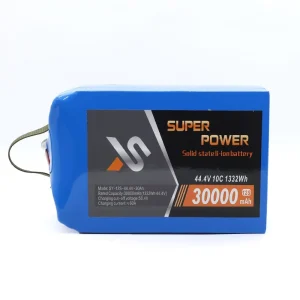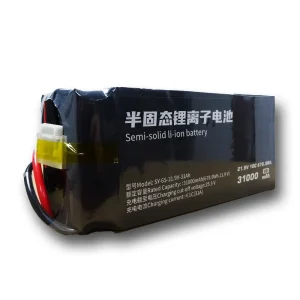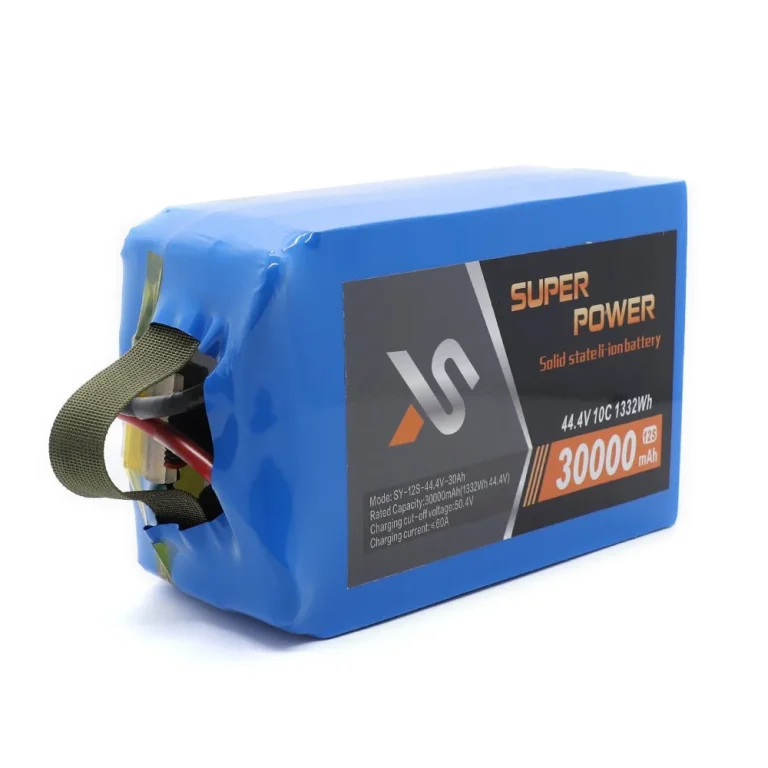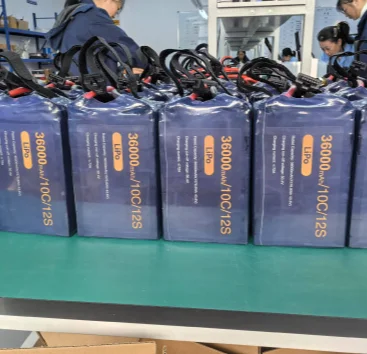Charging issues usually arise from balancing charging speed requirements with battery longevity, heat produced during charging, and sparse coverage where individuals reside rurally. These are common issue problems with safety and effectiveness as priority concerns.
Commanding Drone Battery Technology
Standard Drone Batteries
The most prevalent drone batteries are lithium polymer (LiPo) and lithium-ion (Li-ion) batteries.They are also lighter in weight and possess higher energy density, which is beneficial in maximizing drone flight time.
Impact of Battery Chemistry on Charging
The battery chemistry in drones also affects charging and maintenance. As an example, LiPo batteries need to be charged with utmost care so that they are not overcharged beyond their capacity, and it may swell or even catch fire. That is why most drone operators use Li-ion batteries since they are stable and possess a long lifespan for the cycle.
TAIXING SHENGYA ELECTRONIC TECHNOLOGY CO., LTD. offers such products as the SY-12S-44.4V-30Ah with longer cycle life of 800 cycles (0.5C/0.5C 100%DOD) for safety and reliability.
Features of TaiXing Shengya Lithium Batteries
TaiXing Shengya lithium batteries excel in the field where they have high energy density and better safety performance. They are even pierceable without causing a fire or explosion, a testament to the effectiveness of their construction and engineering capability.
They are likewise ultra-high capacity batteries beyond nominal capacity designations and thus very well-suited for applications requiring high-drone utilization.
Unveiling Charging Issues
Enabling High Energy Needs
Drone batteries are power-intensive during flight and need efficient charging systems to re-fill the power at high velocities without compromising the battery life. The problem is how to charge at high velocities and preserve the battery life.
Balancing Speed and Battery Health
One of the primary issues of recharging a battery in a drone is regulation of heat production during recharging. Excessive heat shortens the life of internal battery components or causes total failure. Adequate thermal management systems must be used to avoid such risk and ensure safety.
While fast charging is to be preferred in minimizing downtime, this must be weighed against the maintenance of battery life in the long term. High-rate charging can lead to premature degradation unless it is managed.
Infrastructure and Environmental Limitations
Power sources may not always be readily available for use in off-grid locations where the drones are used most of the time. Outside environmental factors like temperature change might also impact charging efficiency and battery life.
By knowing such subtleties of drone battery technology, the operators can make wise choices regarding how to best control the power requirements of their gear over the long haul without having to sacrifice reliability or safety.
New Solutions for Smart Charging
The Role of Intelligent Charging Technology
Smart charging technology is among the technologies that upgrade drone battery batteries to charge more efficiently and safely. The technologies can, through intelligent systems, monitor and oscillate the charging in real time for best performance.
TaiXing Shengya’s Intelligent Battery Charger
This does not make every charge cycle lose battery life to its maximum and stops overcharging or overheating. Smart chargers possess algorithms that adjust according to the condition of the battery, and an optimized charging experience maximizes your drone battery life. Optimizing Cycles with TaiXing Shengya Intelligent Charger
With the high-tech monitoring system, the chargers can monitor the charging rate accurately so that each cycle remains safe and efficient. This works wonders in preserving the battery life.
Innovations in Fast Charging Innovations
The recent development in fast charging technologies has reduced the amount of time consumed in charging batteries of drones significantly without reducing battery life.
These developments rely on advanced power supply systems and better thermal management plans that deliver high charging rates without maintaining temperatures over safe limits.
Role of Battery Management Systems (BMS)
Battery Management Systems (BMS) are crucial elements that make drone battery safe operations possible.
An optimally designed BMS monitors parameters such as voltage, current, temperature, and state of charge to provide protection against the risks of overcharging or short-circuiting.
BMS integration with drone battery systems enhances reliability and security by providing real-time feedback on the health and operation of batteries.
Integration of Portable Charging Solutions
Benefits of TaiXing Shengya Portable Chargers
TaiXing Shengya offers portable chargers that are lightweight and multi-functional for mobile operators.
These are compact but strong enough to charge your drone battery properly, even outdoors where standard charging stations may not be accessible.
The portability aspect enables users to continue without being held back by fixed charging points.
Optimal Maintenance of Drone Batteries Practices.
Safe charging is an important aspect of the life and health of your drone battery. Some of the most notable ones include charging from a charger whose voltage rating and ampere rating are identical to your battery. Overheating and batter damage will occur due to overcharging or charging with an incompatible charger.
Leaving your drone battery to cool before charging will also prevent overheating. Checking your battery for wear or damage before charging prevents safety risks.
Optimal Charging Time, Voltage, and Storage Guidelines
Understanding the correct voltage and charging time is crucial to your battery. TaiXing Shengya suggests that their lithium batteries be recharged with 0.5C-1C rates to recharge the power completely without compromising on the battery. Avoiding over-discharging of the battery before charging is also suggested since it would cause greater degradation.
If batteries are to be stored for extended periods, they must be maintained at half charge condition, i.e., 50%, and room temperature and dry state so that age-capacity loss can be avoided.
Battery Degradation Reduction Techniques
Do not put the battery under warm conditions because high temperature and low temperature negatively impact performance and life.
Furthermore, building the habit of more concentrated moderate discharge cycles rather than superficial high-frequency discharges will ensure that the capacity of the battery can be maintained in the long run.
TaiXing Shengya SY-6S-21.9V-31Ah boasts an 800-cycle (0.5C/0.5C 100%DOD) high cycle life, and this is a reflection of the worth of consuming these best practices.
Married with TaiXing Shengya’s innovative solutions to your drone operation, you have the best of performance with safety and durability to your equipment. Scour their stock of state-of-the-art solutions tailor-made for long missions in different types of terrains.
For those who would like to elevate their drone experience to the next level, the purchase of high-quality batteries from TAIXING SHENGYA ELECTRONIC TECHNOLOGY CO., LTD. is the way to go. Their innovative solutions not only put an end to daily charging woes but also provide stable sources of power that enable flight capabilities and extend working efficiency. Buying TX Shengya’s products enables you to maximize the full capacity of your drone batteries and enjoy an unmatched flying experience.












